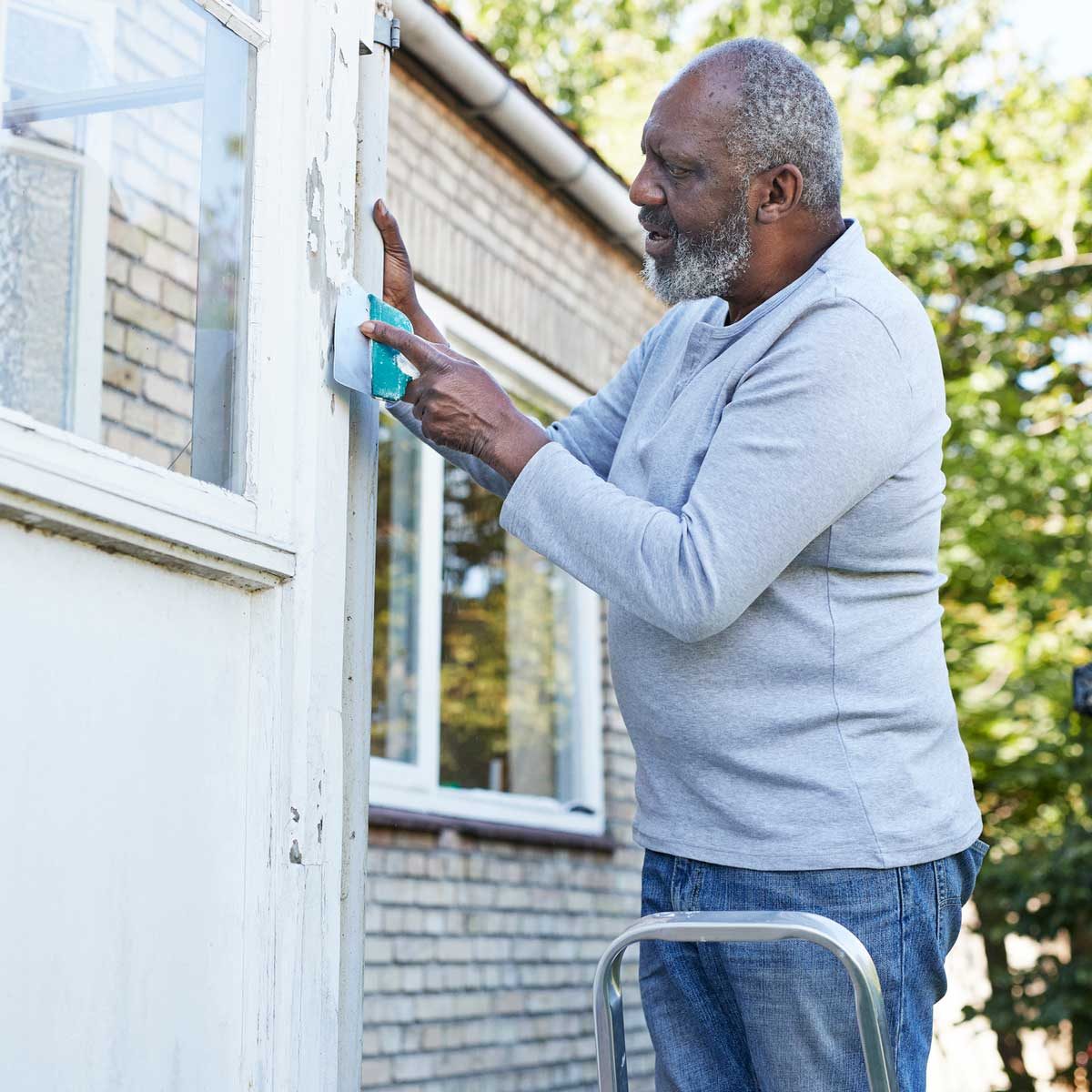If you're wondering whether you can use exterior paint indoors — or vice versa — we've got your answer: You can, but you probably shouldn't.

Can You Use Exterior Paint Inside?

Have you ever looked at that half-full can of exterior house paint and wondered if you could use it in your home? Or maybe you’ve thought about saving a little money and using some leftover interior paint on the exterior of the front door.
While technically you can use exterior paint inside and interior paint outside, there are a lot of good reasons not to, and we’ve listed them below. But first, here’s a short primer (sorry, we couldn’t resist!) on the main types of interior and exterior paint:
- Most interior paint is acrylic latex, although it doesn’t actually contain latex. It’s water-soluble when wet, low-odor, and emits a minimal amount of VOCs (volatile organic compounds). Manufacturers engineer most varieties to be washable and scratch resistant.
- Most exterior paint is also acrylic latex. This means that it’s also water-soluble when wet, but it has added resin to make it weather-resistant. Sometimes brands label it “acrylic enamel”, but this refers to the gloss finish. According to Benjamin Moore Paints, most exterior acrylic latex paint will work on various exterior surfaces, including stucco, wood siding, fiber cement and brick.
- Though increasingly less used, true exterior enamel is an oil-based paint that requires turpentine or mineral spirits for clean-up.
Can You Use Exterior Paint Indoors?
Exterior paint manufacturers formulate them to stand up to all sorts of weather conditions. Those conditions include rain, intense heat and sun or freezing temperatures.
Exterior paint contains resins that help the paint expand and contract (instead of crack) depending on the weather, as well as additives to deter mildew, fading, and staining — for example, from a sprinkler system using mineral-rich well water.
Given that durability, homeowners might think using exterior paint indoors is a smart move to ensure longevity. But while exterior paint will dry indoors, you shouldn’t use it for your interior walls:
- “The additives that are needed to make exterior paint resilient outdoors are not intended for use inside,” says Mark Savino, Strategic Remodeling Advisor at YouthfulHome, an online resource for finding home improvement contractors. “The more intense levels of resin used in exterior paint are intended to cure and age outdoors where they will not affect indoor air quality.”
- Acrylic latex paint formulated for outdoors contains a higher number of VOCs than interior paint. This means that the paint’s off-gassing will be smelly at best and potentially hazardous at worst. It’s especially true for people with allergies, breathing problems or chemical sensitivities. Even after it dries, exterior acrylic latex will continue to emit VOCs.
- “The ingredients in exterior paint that prevent mildew can cause odors and even allergic reactions when used in confined spaces,” says Savino.
- Because of their toxic fumes, you should never use true enamel or oil-based paints for interiors. And, depending on where you live, may be illegal for both interior and exterior use. “As VOCs vaporize, they cause accelerated depletion of the earth’s ozone, resulting in ground level ozone,” explains Savino. “The EPA has banned the use of oil paints in several states with high ozone levels because of ingredients (oil, mineral spirits) that have higher levels of VOCs than water-based paint.”
- Despite their durability for outdoor conditions, exterior paints are more prone to scuffing and scratches when applied indoors.
Can You Use Interior Paint Outdoors?
Using interior paint on a house exterior isn’t hazardous to your health, but it also doesn’t make much sense. Here’s why:
- Interior paint doesn’t contain the same resins, fungicides and other additives as exterior paint. It will not stand up to the elements. Not even when applied to a sheltered spot like a front door on a covered porch.
- Manufacturers don’t formulate interior paint to expand and contract with temperature changes. As a result, it’s subject to crazing (hairline cracks) and cracking.
- Interior paint is not designed to be in direct sunlight, so its color will fade faster outdoors.



















